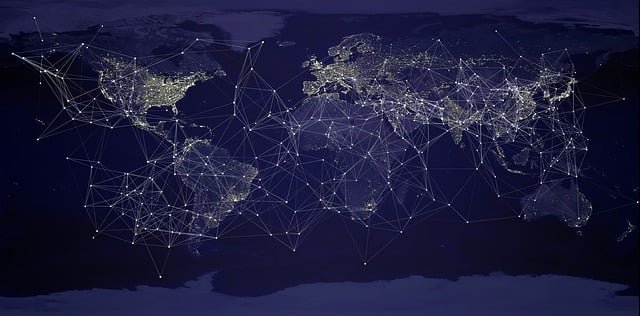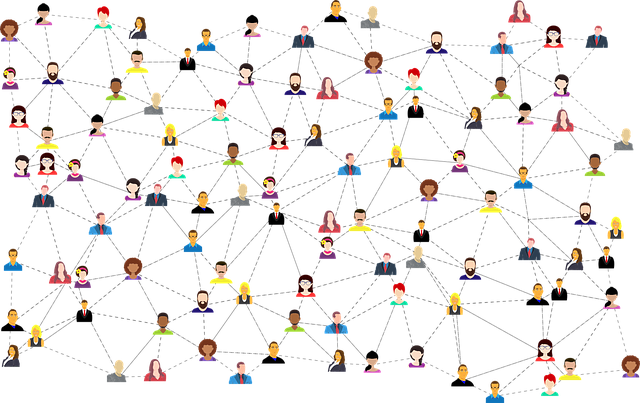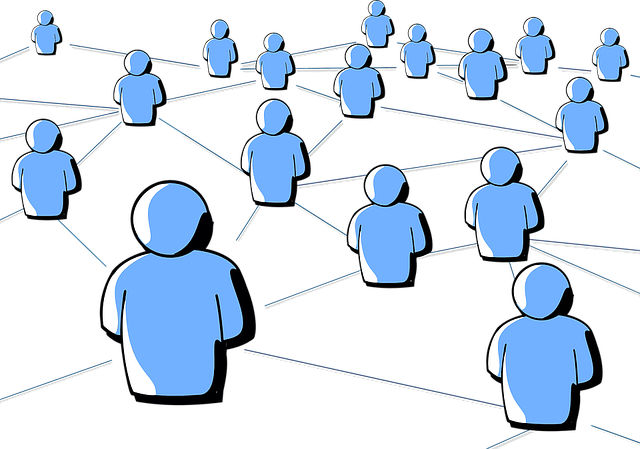
Mundo tecnológico: La internet. // Technological world: The Internet.
Hola amigos de esta increíble comunidad y de #hive, hoy quiero vengo hablarles de internet, qué cosa es, como funciona, como se desarrolla, si, ya sé, bueno, ya todos conocemos internet, de hecho, forma parte de nuestras vidas cotidianamente, a tal punto que la necesitamos para todo.
Pero resulta muchas personas la usan cotidianamente sin entender a fondo de que se trata y como funciona, por lo menos a nivel técnico, así que les hablaré un poco sobre este lado de ella, adentrándome un poco en sus principios de funcionamiento y lo que hace que sea tan especial, conocida y funcional en nuestros días.
But it turns out that many people use it on a daily basis without understanding in depth what it is and how it works, at least at a technical level, so I will talk a little about this side of it, going a little into its principles of operation and what makes it so special, known and functional in our days. Hello friends of this incredible community and #hive, today I want to talk to you about the internet, what it is, how it works, how it develops, yes, I know, well, we all know the internet, in fact, it is part of our daily lives, to such an extent that we need it for everything.
¿Qué es la internet?
Es un conjunto descentralizado de redes de comunicaciones interconectadas, que utilizan la familia de protocolos TCP/IP, lo cual garantiza que las redes físicas heterogéneas que la componen constituyen una red lógica única de alcance mundial.
What is the Internet?
It is a decentralized set of interconnected communications networks, using the TCP/IP family of protocols, which ensures that the heterogeneous physical networks that comprise it constitute a single logical network of global reach.
¿Qué significa lo anterior?
Bueno, en el mundo de la informática a veces conceptos simples esconden verdades realmente complejas, aunque la explicación anterior es bastante obvia, vamos a segmentar y poner la mirada en algunos de los términos usados en ese concepto.
Well, in the world of computing sometimes simple concepts hide really complex truths, although the above explanation is quite obvious, let's segment and take a look at some of the terms used in that concept.

Para ello vamos a definir ¿Qué es una red de comunicación?
Una red de telecomunicación es un conjunto de medios, tecnologías, protocolos y facilidades en general, necesarios para el intercambio de información y archivos entre los usuarios de una red.
To do so, we will define What is a communication network?
A telecommunication network is a set of media, technologies, protocols and facilities in general, necessary for the exchange of information and files between the users of a network.
Simple verdad, o sea, no tienen por qué ser exclusivamente ordenadores, sino el conjunto variado de medios y tecnología que están de alguna forma interconectados y los programas (software) instalados en estos medios, todo esto forma una red, haciendo posible que fluya la información.
Ya vamos viendo que un grupo de estos medios interconectados forman una red de comunicación y que entonces varios grupos, forman barias redes, y todas estas redes interconectadas forman la internet, de ahí el término “heterogéneas”, ya que cada red (grupo de medios y tecnología conectados entre sí) presenta sus características propias, y puede estar compuesto por varias redes más (subredes).
Simple truth, that is, they do not have to be exclusively computers, but the varied set of media and technology that are somehow interconnected and the programs (software) installed in these media, all this forms a network, making it possible for information to flow.
We are already seeing that a group of these interconnected media form a communication network and then several groups form several networks, and all these interconnected networks form the Internet, hence the term "heterogeneous", since each network (group of media and technology connected together) has its own characteristics, and may be composed of several other networks (sub-networks).

¿Qué son los protocolos TCP/IP?
TCP/IP es un conjunto de protocolos que permiten la comunicación entre los ordenadores pertenecientes a una red. La sigla TCP/IP significa Protocolo de control de transmisión/Protocolo de Internet. Proviene de los nombres de dos protocolos importantes incluidos en el conjunto TCP/IP, es decir, del protocolo TCP y del protocolo IP.
Bueno digamos que yo quiero saber tu nombre y te digo, oye fulano, ¿Cómo te llamas?, entonces tu me respondes, me llamo Esperencejo, aquí se a producido un intercambio de información, bueno en las redes los medios que la integran no hablan de esa manera, para esto usan protocolos que siguen los mejores estándares para dicha tarea, y dentro de ellos encontramos a la familia TCP/IP que incluye todo lo necesario para dicha comunicación, mediante ellos nuestra computadora sabe que hacer cuando le preguntan su nombre y a donde responder o mandar la información cuando responde.
What are TCP/IP protocols?
TCP/IP is a set of protocols that enable communication between computers belonging to a network. The acronym TCP/IP stands for Transmission Control Protocol/Internet Protocol. It comes from the names of two important protocols included in the TCP/IP suite, i.e. TCP protocol and IP protocol.
Well let's say I want to know your name and I tell you, hey so-and-so, what is your name, then you answer me, my name is Esperencejo, here an exchange of information has taken place, well in the networks the means that integrate it do not speak that way, for this they use protocols that follow the best standards for this task, and within them we find the TCP/IP family that includes everything necessary for this communication, through them our computer knows what to do when they ask your name and where to answer or send the information when it responds.

¿Qué son las redes físicas y lógicas?
El es conjunto de medios que conforman la red interconectados físicamente haciendo uso de hardware como por ejemplo cables y suiches .
Una red lógica, a diferencia de una red física, a menudo abarca múltiples dispositivos físicos, como nodos de red y equipos de red que a menudo forman parte de redes físicas separadas.
Digamos que en nuestro trabajo de Fulanito hay varias redes físicas, muchos ordenador y otros dispositivos funcionando en armonía, pero como pertenece a una gran corporación, la instalación está dividida en departamentos, y cada departamento tienes varios ordenadores que conforman una red, entonces hay varias redes separadas que no están interconectadas directamente entre sí, una para cada departamento, luego mediante un software (Programa) en un Nodo especial(Servidor, un ordenador o varios), uno todas esas redes haciendo posible que se puedan comunicar entre sí, creando una red lógica, regulando con el varios software ese flujo de la información.
Bueno hasta aquí llego por hoy, en próximas entradas abarcaremos más sobre este interesante tema y partiremos hacia otros horizontes a partir de este punto.
Si han llegado hasta aquí les agradezco por su tiempo en esta publicación y espero sus comentarios. Chao, un abrazo y hasta la próxima entrega
What are physical and logical networks?
A logical network, unlike a physical network, often comprises multiple physical devices, such as network nodes and network equipment that are often part of separate physical networks.
A logical network, unlike a physical network, often encompasses multiple physical devices, such as network nodes and network equipment that are often part of separate physical networks.
Let's say in our Fulanito's work there are several physical networks, many computers and other devices working in harmony, but as it belongs to a large corporation, the facility is divided into departments, and each department has several computers that make up a network, then there are several separate networks that are not directly interconnected with each other, one for each department, then through a software (Program) in a special Node (Server, a computer or several), one all these networks making it possible to communicate with each other, creating a logical network, regulating with the various software that flow of information.
Well, this is it for today, in next entries we will cover more about this interesting topic and we will go to other horizons from this point.
If you have come this far I thank you for your time in this publication and I look forward to your comments. Bye, a hug and see you next time.
Fuentes de las imagenes / Image sources
Image by Gordon Johnson from Pixabay
Image by Pete Linforth from Pixabay
Image by Cheska Poon from Pixabay
Image by OpenClipart-Vectors from Pixabay
Otras fuentes bibliográficas / Other bibliographic sources
Congratulations @denisdg! You have completed the following achievement on the Hive blockchain and have been rewarded with new badge(s):
Your next target is to reach 200 upvotes.
Your next target is to reach 50 replies.
You can view your badges on your board and compare yourself to others in the Ranking
If you no longer want to receive notifications, reply to this comment with the word
STOPSupport the HiveBuzz project. Vote for our proposal!
Exelente post , super instructivo, lo comparto en Twitter 😊🙏
Gracias amigo
The rewards earned on this comment will go directly to the people sharing the post on Twitter as long as they are registered with @poshtoken. Sign up at https://hiveposh.com.
Interesante. No sabía todos esos términos. Es verdad que a veces usamos internet sin saber cómo funciona. Muy bueno. 🙏
Gracias, me da mucho gusto que te resultara interesante.